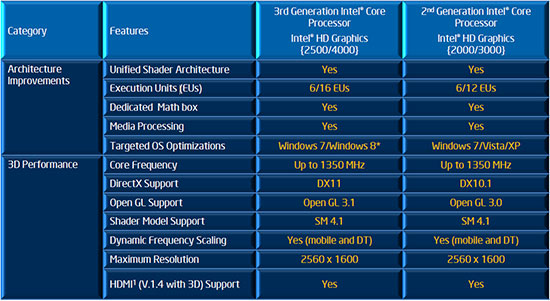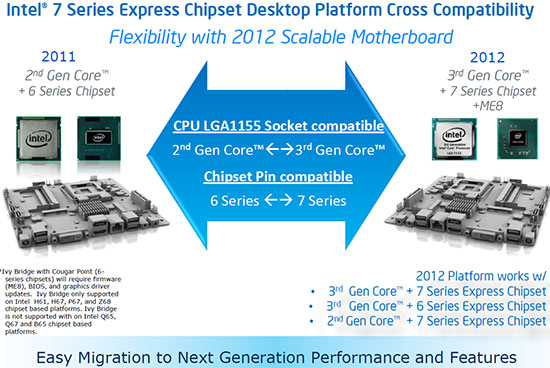AMD Versus Intel Integrated Graphics w/ Ivy Bridge
Final Thoughts and Conclusions
As you can see from out test results today, Intel has managed to come really close to catching AMD in terms of integrated graphics performance. Intel Ivy Bridge processors with Intel HD 4000 graphics are able to compete with AMD’s Llano APU and the Radeon HD 6550D graphics engine.

Intel was able to do this thanks to numerous architecture improvements, faster clock speeds and updates to their supported API’s. This is great news for Intel and a huge step in the right direction for them when it comes to graphics performance. You can do quite a bit without a graphics card these days! Intel HD 4000 Graphics can also run three monitors without the need for a discrete graphics card, so Intel has been adding more features as well as boosting performance.
Don’t worry about AMD too much as they will be releasing a new APU called ‘Trinity’ very soon with an estimated 50% better performance thanks to the introduction of Radeon HD 7000 series graphics technology. So, if you take our numbers for the current generation of AMD integrated graphics and add 50% to them and you get some pretty incredible integrated graphics performance.
The bad news for AMD is that the Trinity APU’s are going to require a new socket design as the pin count and arrangement of the pins has changed. That means AMD will be launching the FM2 socket with the release of Trinity APUs. Trinity APUs can work with the existing A75 chipset, but only if it uses the yet to be released FM2 socket. This means that anyone that invested into an A75 platform for Llano with the FM1 socket will have to buy a new motherboard in order to run Trinity. This is a bit of a let down, but socket changes happen. AMD will also be releasing a new chipset called the A85 with socket FM2 when Trinity launches, so you’ll see some other minor feature enhancements there as well.

Intel on the other hand, didn’t make a socket change with Ivy Bridge, so any Sandy Bridge user can upgrade their processor and get a performance boost without changing the motherboard. You will need to do a BIOS update though and Ivy Bridge is only supported on Intel H61, H67, P67 and Z68 and of course all the new 7 series chipsets just released. If you happen to have one a motherboard with one of those chipsets you are in luck!
At the end of the day we are seeing something special happen with integrated graphics and for the casual PC user they should be able to do everything you want. We also liked seeing our Ivy Bridge test system (Intel Core i5-3550 CPU, DH77EB motherboard) running at under 30 Watts at idle on the desktop! If you don’t need a discrete video card you can remove it and save some serious power!

Comments are closed.